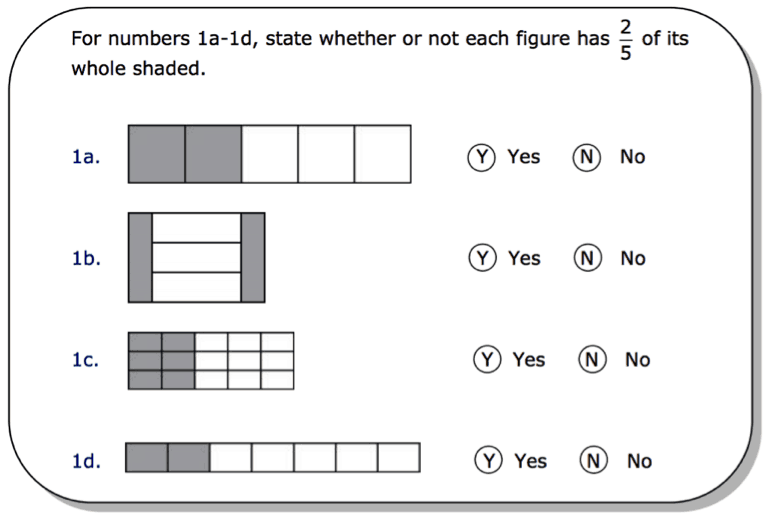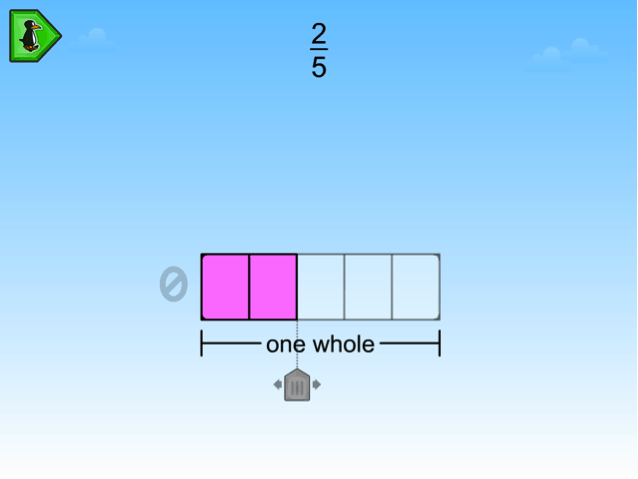Common Core: Blended Learning Solves Math

The two Common Core assessment consortia, Smarter Balanced and PARCC, have both recently released material giving us an insight into the upcoming Common Core math tests. One of the released items referenced by many articles is the 4th grade fractions question shown here:

This is significantly different from a typical standardized test question in a number of ways:
- There is no calculation to be done. Students have to understand the meaning of fractions as visual models.
- A decision needs to be made about each part of the question. On a typical multiple-choice question, students only have to find one “answer”, so they’re often taught to literally discard the two most unlikely looking responses and then make a best “guess.” This strategy is now, thankfully, rendered completely useless. All four parts of this question could be yes, or all four could be no, or any other combination in between.
- Every part of the question targets some potential misconception.
- 1a is obviously correct, but 1b is not. Even though in both responses 2 out of 5 parts are shaded, the second diagram is not split into equal partitions.
- In 1c, even though 6 boxes are shaded, the students need to understand that this is of visual model of an equivalent fraction to two fifths.
- 1d requires students to clearly understand that a fraction is a means of writing a part-whole ratio rather than a part-part ratio.
This type of question presents a conceptual hurdle for many students, and the big question for schools is how are they going to ensure that they adequately prepare all students for this type of assessment? Blended learning provides a solution.
ST Math, a program used in 24 states in a Blended Learning model, includes games that would specifically help students be successful on this released item, but also build their overall conceptual understanding of fractions. The program was built on research into Spatial Temporal reasoning at the University of California, Irvine, and is a game-based learning system that allows all students to learn by doing, solving problems using hands-on visual models. If students solve a puzzle correctly, JiJi the penguin is able to cross the screen, however, if they make a mistake, they receive immediate informative feedback, which shows them precisely why their answer was incorrect, and JiJi is unable to cross the screen.

In this 4th Grade game Match Fraction, students are given the symbolic fraction ⅖. They have to use the manipulative model to build the visual equivalent. First they drag a slider to partition the bar into as many equal parts as determined by the denominator, in this case 5. Then they drag the slider to “color in” the number of partitions indicated by the numerator, in this case 2.
This is only one game amongst several hundred within the system covering fractions, but it exemplifies how software is no longer just useful as a tool to assist students with “drill” practice. Computers, and now increasingly tablets too, can be used to give all students rigorous learning experiences, creating critical thinkers able to meet the 21st century learning expectations outlined by the Common Core Mathematics standards.



0 Comments
Leave a Comment
Your email address will not be published. All fields are required.